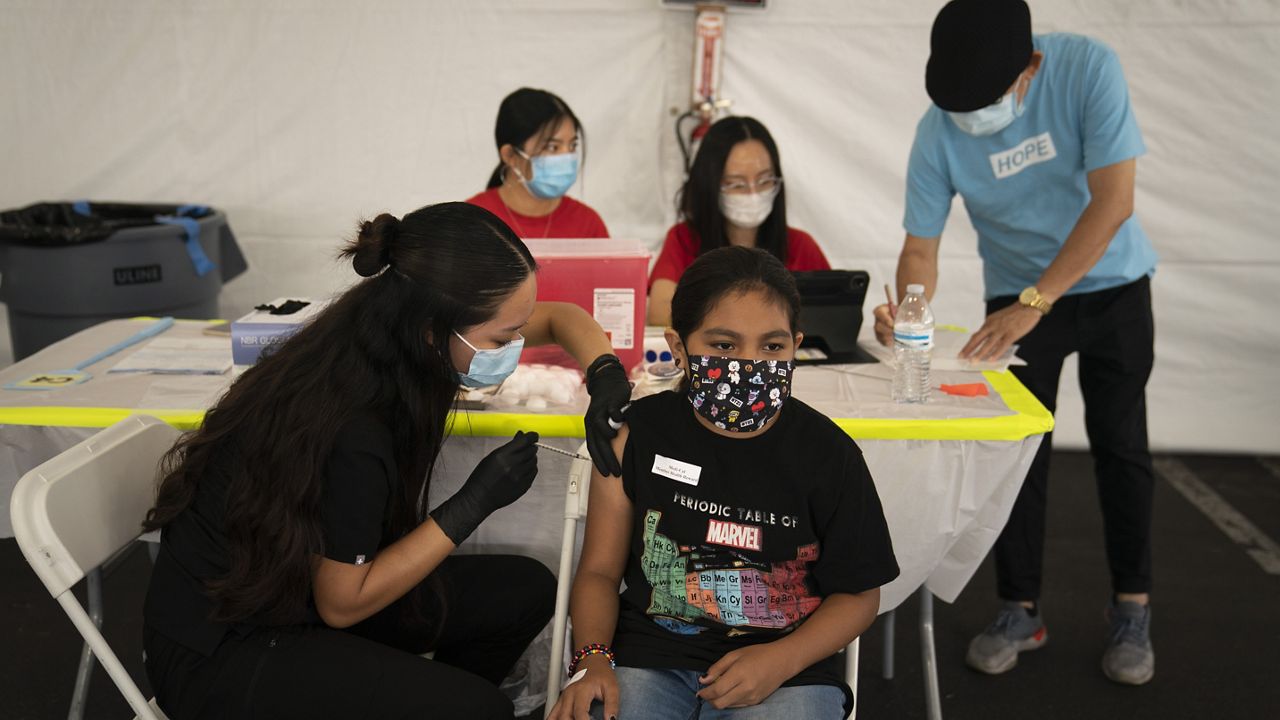As millions of Americans have already rolled up their sleeves for booster shots, the U.S. Food and Drug Administration (FDA) this week will hold key meetings that could have a major impact on the the drive to get booster shots in arms.
For those who were vaccinated against the coronavirus with the Moderna and Johnson & Johnson vaccines, and who are anxiously awaiting their turn to receive booster doses, those answers could come in a matter of weeks.
The FDA announced earlier this month that it set meetings for its influential Vaccines and Related Biological Products Advisory Committee (VRBPAC) will discuss newly available data for the currently available COVID-19 vaccines. Currently, in the United States, the vaccines from Moderna and Johnson & Johnson have received Emergency Use Authorization (EUA) from the FDA, while the Pfizer-BioNTech vaccine has received the FDA's full approval.
"Vaccines are one of the most important interventions for bringing an end to the ongoing pandemic," Peter Marks, director of the FDA’s Center for Biologics Evaluation and Research, said in a statement. "It’s critical that as many eligible individuals as possible get vaccinated as soon as possible."
On Thursday, Oct. 14, and Friday, Oct. 15, the VRBPAC will meet to discuss authorizations for booster doses of the Moderna and Johnson & Johnson COVID-19 vaccines. The Thursday meeting will be devoted to Moderna's two-dose mRNA vaccine, and Friday's will discuss a second dose of J&J's single-shot jab. Both vaccines are currently authorized for Americans 18 and older. In August, the FDA authorized a third dose of the Moderna vaccine for certain immunocompromised people.
Also on the Oct. 15, the panel will hear a presentation from the National Institute of Health’s (NIH) National Institute of Allergy and Infectious Diseases (NIAID) about "mixing and matching" booster doses, and will discuss that data.
"Once vaccinated, we want to ensure that individuals continue to be protected against the adverse effects of COVID-19," Marks continued. "The available data make clear that protection against symptomatic COVID-19 in certain populations begins to decrease over time, so it’s important to evaluate the information on the use of booster doses in various populations."
As of Saturday, Oct. 9, more than 216 million Americans have received at least one dose of a COVID-19 vaccine, accounting for 65.3% of the U.S. population, with more than 187 million fully vaccinated, or 56.4% of the population, according to the CDC.
Of those fully vaccinated, more than 103 million were inoculated with the Pfizer-BioNTech vaccine, over 69 million received the two-dose Moderna vaccine and nearly 15 million got the single-dose jab from Johnson & Johnson.
Nearly 8 million people have received a booster dose of a COVID-19 vaccine, with the vast majority receiving a third dose of the Pfizer-BioNTech shot.
The two initial Moderna shots contain 100 micrograms of vaccine each. But the drugmaker says 50 micrograms ought to be enough for a booster for healthy people.
A company study of 344 people gave them a 50-microgram shot six months after their second dose, and levels of virus-fighting antibodies jumped. Moderna said the booster even triggered a 42-fold rise in antibodies able to target the extra-contagious delta variant.
Side effects were similar to the fevers and aches that Moderna recipients commonly experience after their second regular shot, the company said.
As for people who got the J&J vaccine, the company submitted data to the FDA for different options: a booster shot at two months or at six months. The company did not signal its preference.
J&J released data in September showing that a booster given at two months provided 94% protection against moderate-to-severe COVID-19 infection. The company has not yet disclosed patient data on a six-month booster, but early measures of virus-fighting antibodies suggest it provides even higher protection.
Even without a booster, J&J says, its vaccine remains about 80% effective at preventing COVID-19 hospitalizations in the U.S.
Scientists emphasize that all three vaccines used in the U.S. still offer strong protection against severe disease and death from COVID-19. The issue is how quickly, and how much, protection against milder infection may wane.
On Tuesday, Oct. 26, the VRBPAC scheduled a meeting to discuss authorizing the Pfizer-BioNTech mRNA vaccine in children 5-11, a milestone which many parents nationwide are eagerly awaiting.
"We know from our vast experience with other pediatric vaccines that children are not small adults, and we will conduct a comprehensive evaluation of clinical trial data submitted in support of the safety and effectiveness of the vaccine used in a younger pediatric population, which may need a different dosage or formulation from that used in an older pediatric population or adults," Acting FDA Commissioner Janet Woodcock said in a statement.
California Gov. Gavin Newsom announced in early October that the state will mandate COVID-19 vaccinations for all school children once the FDA gives full approval for those age groups.
All of the meetings will be streamed live on the FDA's YouTube page, other social media platforms and its website.
While the FDA and CDC ultimately scaled back use of Pfizer boosters, Biden administration officials, including Dr. Anthony Fauci, have suggested that extra shots will eventually be recommended for most Americans.
They point to data from Israel showing lower rates of infections and severe disease among people who received a third Pfizer shot.
The FDA meetings come as U.S. vaccinations have climbed back above 1 million per day on average, an increase of more than 50% over the past two weeks. The rise has been driven mainly by Pfizer boosters and employer vaccine mandates.
The Associated Press contributed to this report.



